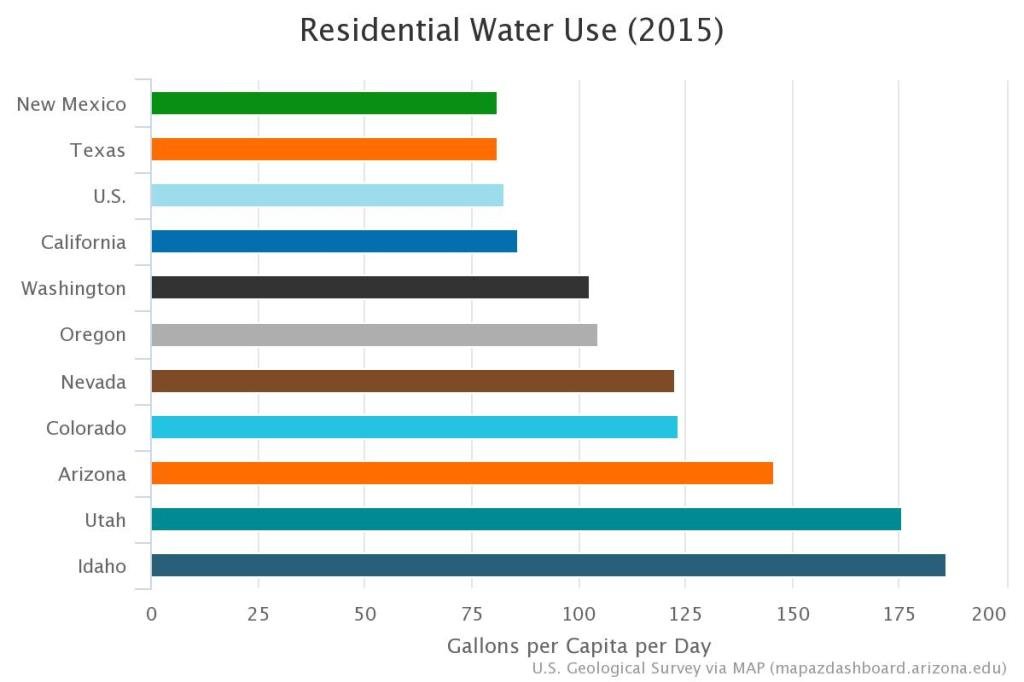Is this a glimpse into the future of the Southwest? not enough groundwater All construction already approved in the Phoenix area is covered. The state has suspended approval of new groundwater-only residential subdivisions in the Phoenix area, limiting expansion in fast-growing (and relatively affordable) areas outside of Phoenix. likely to
There is a lot of misinformation and general confusion on the subject, so let’s assess what this policy change means for real estate.
Inside story: According to last week’s report from the Arizona Department of Water Resources (ADWR), in the Phoenix area projected 4% deficit Groundwater Approximately 4.9 million acre-feet of demand is expected over the next 100 years. At the same time, the Colorado River is also experiencing its worst drought in more than 1,200 years, with Arizona, California and Nevada all suffering last week. save collectively Use 3 million acre feet of river water by 2026. Arizona alone agreed to give up 1.8 million acre-feet of water, a 55% reduction.
It is important to note that as of 2020, 41% of Arizona’s water supply is groundwater, 36% is the Colorado River, 18% is state rivers, and 5% is reclaimed water. It is equally important to note that the largest users of groundwater are not Arizona residents, especially agricultural businesses. alfalfa farming.
According to state estimates, 325,000 gallons That’s enough for three average-sized Phoenix homes for a year, and an agricultural well can pump 3,000 gallons of groundwater. Per minute. server farm Because technology companies also suck up far more groundwater than individual residents.
In any event, the state has determined that there is not enough groundwater to support the rapid growth of the Phoenix Metro, at least under current management and allocations. And finally, home builders are thirsty. Governor Katie Hobbs said the policy will not affect the 100-year certificates for the 80,000 Phoenix-area homes that have already been approved.
The Phoenix Metro is one of six active management areas that must certify to ADWR that new subdivisions have a 100-year supply of water. Otherwise, new housing permits will only be issued if there is an alternative water source. The policy will primarily affect high-growth areas of the Valley of the Sun, such as Queen Creek and Buckeye, as well as nearby communities that have seen a boom in housing construction in recent years. But limiting the supply of land usually means home and land values skyrocket.
“Affordable housing will be a challenge going forward,” said lobbyist Spencer Kumps. Central Arizona Home Builders Association, Said New York Times. HBACA said industrial and commercial building development could continue, but would be limited unless home builders could find alternative water sources.
What’s happening around Phoenix is nothing new and had similar groundwater restrictions. Enacted in Pinal County in 2021. The ruling had no effect on the ability of local towns and cities to grow in the short term. In 2021, Pinal County Superintendent Steve Miller said the Pinal County city of Casa Grande already has about 25,000 lots with ADWR certification. The nearby city of Maricopa also has enough water resources to at least double in size over the next few decades.
“I don’t want people to panic,” Miller said. “If you have a house in Casa Grande today, you will never run out of water. If you build a house today, you will be fine. is.”
The situation is much the same for the Phoenix Metro, where active housing inventory fell 9.8% in May, the biggest drop of any U.S. housing market. While it is true that some areas are restricted to homebuilders, there are many areas in the Phoenix area that are restricted to homebuilders. do Meets 100 year groundwater supply guidelines. Growth will continue, at least in the short and medium term. Phoenix is rare among cities, pretty efficient It was an unusual approval for a new home in an American city.
There are uncomfortable, existential questions to ask. Are we reaching the point where unchecked population growth collides with ecological reality? Should desert states stop building homes that depend on water from elsewhere? I would argue that desert countries should ban water-intensive farming methods before restricting housing construction, even though the country is already facing a massive housing shortage. But the reality of dwindling water supplies is not a permanent problem that the next generation will have to solve.
This is clearly not just an Arizonan problem. Look at the graph above. In Utah, which is experiencing similarly explosive growth, the legislative committee proposed building a pipeline from the Pacific Ocean to backfill the heavily damaged Great Salt Lake. record low Water level in November. You’ll often hear other ambitious, picture-perfect mochi ideas floating around, like working on a $5 billion desalination plant or piped water from the Mississippi River. . I’m waiting for someone to suggest bringing water from Mars.
There are no good answers here. I believe that the era of relatively cheap housing in the desert will soon become too expensive to support public infrastructure (unless we make major changes to our way of life in this country). rarely occurs). In the Southwest, this is just the beginning.
What impact do you think this will have on the Phoenix real estate market? core logic Are home prices still “overvalued” despite the data showing they were down 3.7% year-over-year as of April?Should states and towns limit development? Share your thoughts with me [email protected].
in our weekly DataDigest newsletter HW Media Editor-in-Chief James Kleimann unlocks the biggest stories about housing through a data lens.sign up here!Do you have a subject? Send him an email [email protected]
















